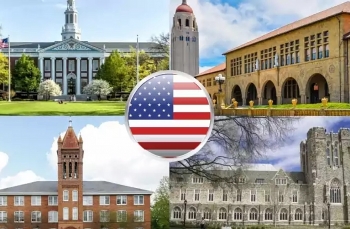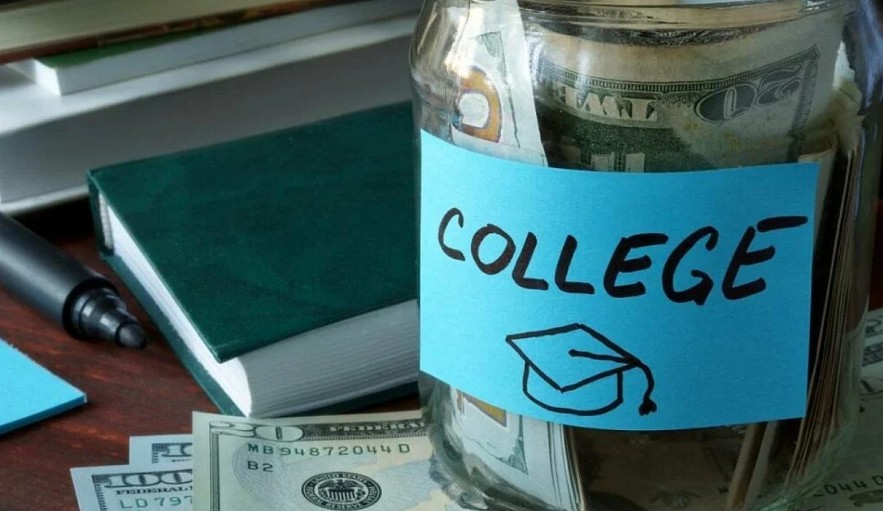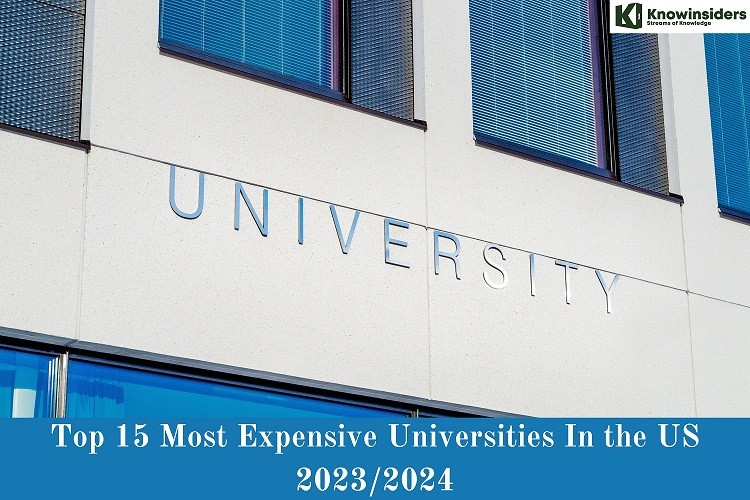The Paradox of College Tuition and Student Dropout in the US
 Top 15 Oldest University Campuses in the United States Top 15 Oldest University Campuses in the United States |
 Top 10 Most Largest US Colleges & Universities - by Enrollment, Subscribers Top 10 Most Largest US Colleges & Universities - by Enrollment, Subscribers |
 |
| More than 40% of American students have considered dropping out |
Miguel Agyei has been concerned about how he will pay for college since he was in high school. He desired to attend a college outside of Illinois, but Agyei felt the cost would be prohibitive.
He therefore decided on the nearby Bradley University in the USA and used his summer job as a means of funding his education. Agyei, a track and field athlete with numerous college records, did not, however, receive a scholarship as a result of Covid-19.
Agyei must seek help from a charitable organization to pay the rent because he cannot afford textbooks. Agyei had to work part-time jobs during her studies to pay for other expenses.
"Extremely stressful. Agyei, whose student debt is up to $25,000, said: "I go to practice, go to class, work 5 to 6 hours overtime, do my homework, go to bed, wake up and repeat the same thing every day."
Poor students must pay more
Although expenses are high, Miguel Agyei observed that the university's bills were also rising daily.
Bradley University is reportedly one of nearly 700 US universities and colleges to raise tuition. The hardest hit are families with low incomes.
However, it is clear that low-income students must pay more in tuition than do students from wealthy families (data analyzed by The Hechinger Report).
As a result, the university will give priority to scholarships for wealthy students in order to attract them. As time goes on, the actual tuition they must pay is frequently less than that of less fortunate students.
Not only Bradley University, but Montreat College in North Carolina also made the decision to give high-income students priority when awarding merit-based scholarships. This school has increased the actual amount that low-income students pay for college by 42%. Students with additional conditions receive a 16% discount.
Similar to this, Monmouth University in Illinois raised the real cost for low-income students by 57% while only increasing it by 3% for students with higher incomes.
According to Miguel Agyei, that is how the school operates. They have to find a way to get by as low-income students.
"The university cannot keep raising tuition for students who barely make ends meet. "It's unfair," Agyei remarked.
Poor students must increasingly rely on student loans as costs rise to pay for college. They ultimately had difficulty repaying their debts, though.
The Institute for College Access and Success reports that many students who receive federal aid come from households with annual incomes of $40,000 or less. Compared to their classmates with higher incomes, they are five times more likely to default on their loans within 12 years of enrolling in college.
Grants don't keep up with college costs
Another reason poor students feel their actual costs are rising faster than high-income students is that federal grants aren't keeping up with college costs.
In the 1970s, Pell Grants - federal grants for low-income students - covered about 69% of college costs for students.
Currently, each student can receive a maximum of $6,895 in stipend, up 15% from 1970. However, when inflation increases, this amount only covers about 25% of the cost.
"The grant is just gliding across the water, while costs continue to rise. When Pell Grant fails to keep up with the costs of inflation, it directly affects those in need. It doesn't just affect the Choosing a school, it also affects the decision to go to college," said Justin Draeger, president of the American Association of Student Financial Administrators.
In addition to the Pell Grant, most US states also have financial aid programs, but in many cases these have not kept up with the rising cost of college.
In Massachusetts, for example, over the past two decades, state financial aid has been cut by 47 percent. Meanwhile, tuition and fees at public universities and colleges increased by 59%.
In 1988, the state's largest grant could cover 80% of the cost of public school students, but currently, the grant covers only 12%.
That leaves most low-income students at four-year public universities unmet financial need.
Meanwhile, other financial assistance from several states has shifted increasingly to benefit high-income families.
According to USA Today, in Louisiana, after the state's main scholarship removed the income limit, these funds began pouring into higher-income families.
Since 2010, 56% of scholarship recipients have a family income of $150,000 or more, while households with an income of less than $15,000 have experienced a 11% decline.
After much criticism, last year the state legislature and governor asked states to stop reporting the family income of scholarship recipients.
More than 40% of students in the US consider dropping out
A recent survey conducted by Gallup and the Lumina Foundation found that a significant number of college students struggle with mental health, and more and more are contemplating dropping out. The survey was conducted last fall with the participation of 12,000 adults, graduating from high school and attending college or university.
Accordingly, 2 out of 5 students said they often experienced emotional stress while attending college. Of these, nearly half are female students.
Over the past six months, more than 40% of college students have considered dropping out, up 34% since 2019. Most said the reason was related to personal mental health rather than a problem. financial or academic difficulties.
Experts say the college process is a time when young people are vulnerable and experience stressful mental health conditions.
According to CNN, an estimated one in five adults in the US has a mental illness, and young people aged 15-25 are most affected. For years, the percentage of college students reporting anxiety and depression has been on the rise, worsening during the pandemic.
An analysis of federal data by the Kaiser Family Foundation found that half of 18-24 year olds reported symptoms of anxiety and depression by 2023, accounting for a third of adults.
Professor Sarah K. Lipson, of Boston University, said about 75% of mental health problems in life will start in the mid-20s. That means the college years are a very vulnerable time epidemiologically.
| According to a survey by the American Council on Education, the mental health of students is always considered the most pressing issue for colleges. However, as student birth demand grows, the shortage of staff leaves mental health centers struggling to keep up. This extends to support centers outside of schools. However, experts say schools still have networks to support students. |
 New Policy in the US in 2021: New laws on Higher Education to reduce worries of rising tuition New Policy in the US in 2021: New laws on Higher Education to reduce worries of rising tuition New Policy - New Law in the US in 2021: Amidst the rising of college studying costs, the US release new law of Higher Education ... |
 Top 15 Countries With Totally or Almost Free Tuition for International Students Top 15 Countries With Totally or Almost Free Tuition for International Students Tuition is one of criteria to consider when students select schools. If you are learning tuition for your overseas study, don’t miss out these countries ... |
 Tuition Fees in Canada for International Students in 2023/2024 Tuition Fees in Canada for International Students in 2023/2024 Canada is a popular study destination for international students. Tuition fees at Canadian universities are a bit high but generally lower than those in countries ... |
























